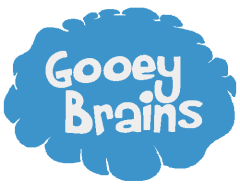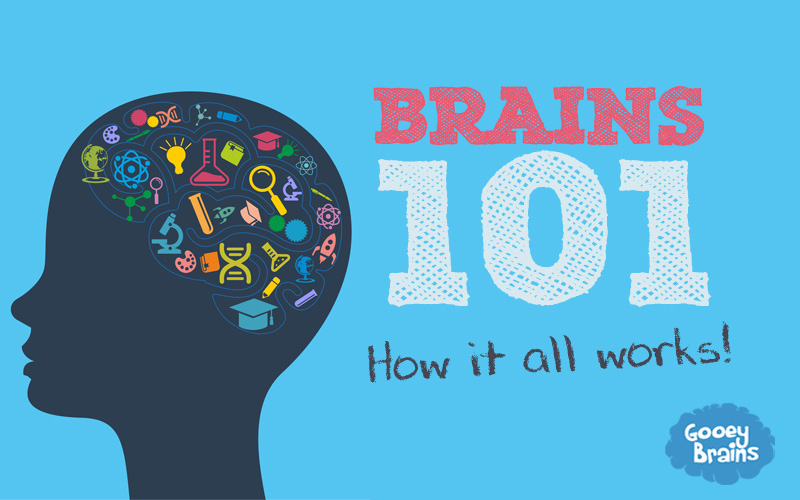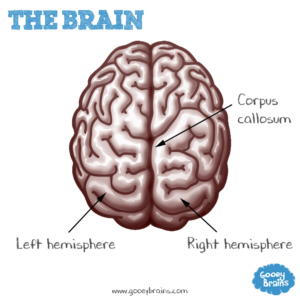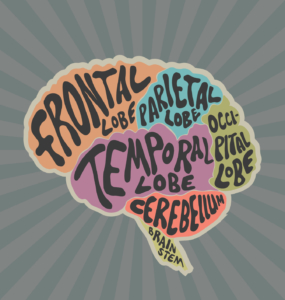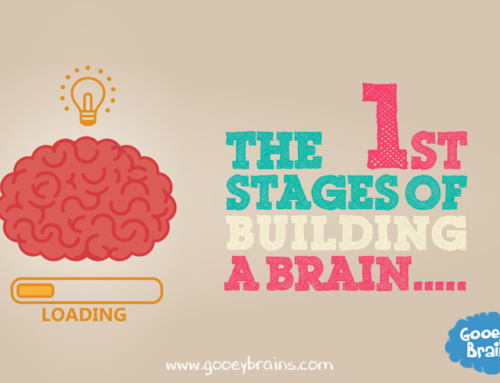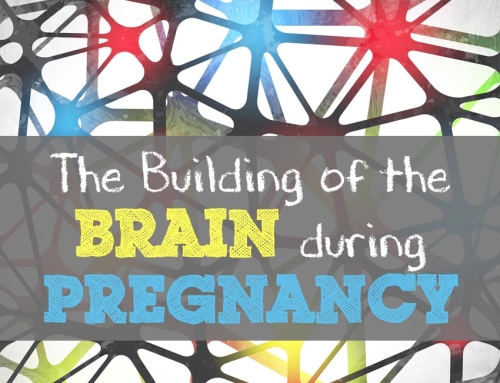Your baby is growing a brain, and this brain will be responsible for how your child feels (emotions), what it thinks (cognition) as well as how its body functions (motor skills)!
The brain is part of the Central Nervous System and connects to your baby’s spinal cord. It helps with really important bodily functions like eating and breathing. Let’s take a look at a brain up close so that you can learn a little bit about the different brain areas.
The brain has two hemispheres.
If you look at the brain from above it consists of two halves, and these halves are called the left and the right hemispheres of the brain. These halves are actually connected in only once place – called the corpus callosum! The corpus callosum is a band of nerve fibers that connects the left and right side of the brain so that they can communicate with one another.
The brain first divides into the two hemispheres in the third and fourth week of pregnancy. However, a baby will start to build the structures that will more clearly define these hemispheres from 10 weeks and 3 days after conception, and is particularly busy building these in week 11 and 12.
What is really cool, is that each hemisphere receives information from your body through the central nervous system. The left hemisphere mostly receives information from the right side of the body, and the right hemisphere mostly receives information from the left side of the body!
As the hemisphere’s of your baby’s brain grow, the right hemisphere will control overall general impressions of things and allow your growing child to see the bigger picture in life. The left hemisphere will focus more on the individual and finer details.
There can be problems if the baby fails to clearly define and form these two hemispheres. For example, Nonsyndromic Holoprosencephaly is a disorder where the brain fails to divide into two halves effectively. Babies with this disorder who survive birth often have a small head, a cleft palate, one front tooth and a flat nasal bridge. The eyes might be small or absent and the parent will start to notice a developmental delay and intellectual disability. The good news is that only 1 in 10 000 newborns will be affected by this disorder.
The brain has four lobes.
When your baby reaches about 28 weeks after conception it starts to develop its lobes! After 28 weeks the lobes continue to develop in complexity and will also keep growing after birth. When fully grown, the frontal lobe will be the largest lobe in the brain.
The Frontal Lobe:
This can be found right at the front of the brain. It does some really important and complicated tasks. It can reason, plan, and solve problems. It is also involved in language and some motor (movement) functions. The frontal lobe receives information from all of the other lobes of the brain and uses this information to make the appropriate movements in the body.
The Parietal Lobe:
This is in the middle of the brain. It is all about touch (tactile sensation) and processes information about pressure, temperature and pain. You can find a special part of the brain called the somatosensory cortex in the parietal lobe, which helps the body to understand the information it receives from the senses.
The Temporal Lobe:
This is at the bottom of the brain. It helps us to hear by helping us to interpret sounds and language. The auditory cortex can be found in the temporal lobe. The temporal lobe also contains the hippocampus! This part of the brain helps us to form memories.
The Occipital Lobe:
This can be found at the back of the brain. It is used to interpret visual information. It contains the primary visual cortex, which receives information from your eyes.
The brain has two important lower regions.
The Cerebellum:
The cerebellum is located at the lower rear region of the brain, and its name means ‘little brain’. It is being developed in the womb between weeks 6 and 16 of pregnancy. It has some important jobs in later child development because it is responsible for muscle coordination and balance. This means that a child is using their cerebellum when they master motor skills such as learning to roll over, crawl and walk. Scientists now know that the cerebellum does some other amazing things too. For example, it helps us to learn music and language. It can also combine signals that a baby gets from using their senses and help them to work out how to respond with their body.
The brainstem is sometime referred to as the first building block of a baby’s brain. When a child is born, the brainstem is the most developed part of their brain. The brainstem is in control of a baby’s reflexes, such as sucking, crying and startling. The brainstem also controls all of the bodily functions that happen in the background to keep the baby alive and healthy! For example, it is responsible for their heart rate and blood pressure, breathing, digestion of food, and sleep.

